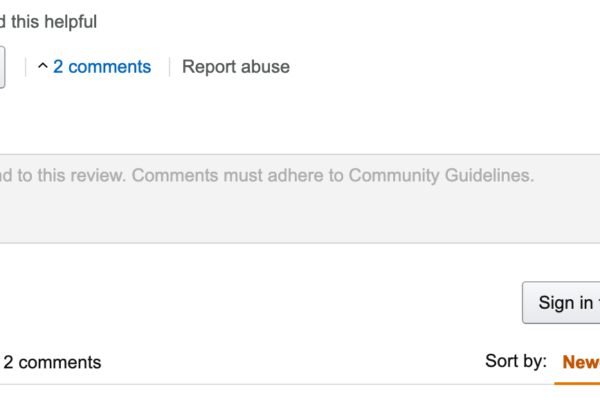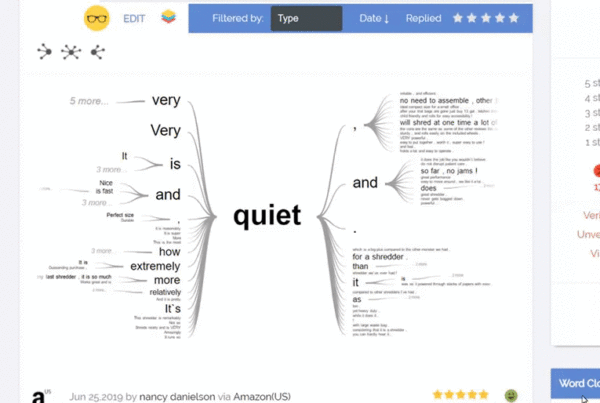Introduction
A recent report found the global ecommerce conversion rate is only 2.32%. [1] In the grand scheme of things, this may not be surprising. However, it is interesting to consider that the conversion rate increases by more than three times, when we look at visitors who view a product page in online shopping websites.
A recent analysis of product pages across 2,687 online stores, revealed that Product Page Conversion Rate (PCR) hovers around an average of 7.91%. [1] The least effective product pages convert only 0.10% of their visiting traffic. The most effective product pages are able to convert almost half (49.73%) of their web traffic.
Given the importance of product pages in conversion one could argue that they play the same role as packaging when shoppers consider buying products in physical stores. The large variance in product page conversion rates, however, highlights how important it is for retailers to include key conversion triggers in their product pages.
Product Page Content: What do retailers include?
So what do retailers include in a product page? Price, images, and product description are the top three most frequently included pieces of information in a product page followed specifications, stock availability and other similar or relevant products. [3]
A quick win for online retailers is to include added value information on their product pages. These added value information include things like value proposition (i.e. the benefit of purchasing the product), video content, information on free shipping criteria, cost of shipping and link to external relevant sites for shoppers who want more information. Currently less than half of all online retailers include such added value content on their product pages. [3]
While the added value information can further engage shoppers in the product page, to truly convert them, retailers need to include authentic and trustworthy consumer centric triggers. Three key triggers retailers need to include in their product page are
- Customer reviews,
- Customer Q&A, and
- Live chat
1. Customer Reviews
Reviews are a key consumer centric trigger missing from almost half of product pages. [3] Previous research shows that more than 3 in 4 (76%) shoppers trust online reviews with 73% saying they are the most influential content on a retailer website. [4]
Other triggers include contact information for the retailer, ratings (e.g. 5 star ratings used by Amazon), and testimonials. Ratings and testimonials relate directly to reviews. While ratings help provide a quick summary of what other shoppers think of the product, testimonials tend to provide expert opinion from trusted and knowledgeable sources. Testimonials are specially important for tech products that get reviewed in the media upon launch.
Information on shipping time and returns or exchanges are further examples of triggers that retailers do not include in product pages. Knowledge of when shoppers can expect to receive delivery of the product and criteria for return or exchanges can help reduce shopper anxiety when buying online. Official industry standard indicators around site security and product credibility can also help reduce shopper anxiety and push them towards conversion.
One of the key things to keep in mind with reviews and ratings is that the volume of reviews/rating is more important than the sentiment or average rating for the product.
In a study, researchers tested three different rating averages against 2,250 people. Two identical products were shown to all study participants. The only difference was that one product had a 5-star average based on 2 ratings, and the other had a 4.5-star average based on 12 ratings. When asked to pick one over the other, 62% picked the one with the higher number of ratings despite its lower average.
This was true when a higher number of ratings were used. In a second instance of the study people were asked to pick between a 5-star average based on 4 ratings against a 4.5-star average based on 57 ratings. Almost the same percentage (61%) picked the option with the higher number of ratings despite a lower average rating.
More reviews adds to a perception of authenticity making it easier for shoppers to make the final purchase decision.
2. Customer Q&A
A key part of shopping in a store is being able to ask questions to store personnel so that shoppers can make a knowledgeable purchase decision. More than 4 in 5 (84%) shoppers say that being able to ask questions is important to them when shopping online. [6] While there are no online store assistants yet, this gap is currently being filled by online Q&As in product pages where shoppers ask questions about the product and get replies from other shoppers, the retailer or the manufacturer.
Q&As in product pages are most effective to remove any doubt or confusion a shopper might have after reading through the product description and even online reviews. During pre-purchase research customers visit the review section to read review section to find out the products strength and weaknesses. But at times, they do not answer specific questions that shoppers might have.
For instance if a shopper looking to buy a Sony Playstation were to go through reviews of the product they might discover that the new systems are not backwards compatible. Here is a screenshot of Playstation reviews that highlight this issue taken from the Review Monitoring tool.
 But on visiting the the Q&A section, we see that inquisitive shoppers have asked the question about backwards compatibility to get detailed and trustworthy responses from other shoppers. These responses reveal that the system is somewhat backwards compatible but limited to games that are available for download. The Q&A is available for all potential shoppers who reach the product page. This information could easily deter some shoppers from buying the product and influence others purchase it if backwards compatibility is not an issue.
But on visiting the the Q&A section, we see that inquisitive shoppers have asked the question about backwards compatibility to get detailed and trustworthy responses from other shoppers. These responses reveal that the system is somewhat backwards compatible but limited to games that are available for download. The Q&A is available for all potential shoppers who reach the product page. This information could easily deter some shoppers from buying the product and influence others purchase it if backwards compatibility is not an issue.
3. Live Chat
A shopper’s need to interact with knowledgeable staff before making a purchase can be further fulfilled through live chat integration in product pages. While Q&As are crowdsourced knowledge that help answer common queries, live chat in product pages is a realtime solution that connects brand and retailers with shopper at the point of conversion.
 A good example of live chat can be seen on some Amazon product pages. For instance the Arlo Pro Security System product page features a Live Expert link that connect the shopper to an expert from Arlo. The brand also implement live chat in their Walmart product page.
A good example of live chat can be seen on some Amazon product pages. For instance the Arlo Pro Security System product page features a Live Expert link that connect the shopper to an expert from Arlo. The brand also implement live chat in their Walmart product page.
 Live chat allows brands and retailers to make customer service a part of the shopper’s pre-purchase journey. It is relevant for technical products like the Arlo Pro Security System where shopper might have concerns about installation or other factors. It is also equally relevant to everyday simple products like clothes and furniture where shoppers have questions on availability of products in different sizes and formats.
Live chat allows brands and retailers to make customer service a part of the shopper’s pre-purchase journey. It is relevant for technical products like the Arlo Pro Security System where shopper might have concerns about installation or other factors. It is also equally relevant to everyday simple products like clothes and furniture where shoppers have questions on availability of products in different sizes and formats.
References
- https://www.smartinsights.com/ecommerce/ecommerce-analytics/ecommerce-conversion-rates/
- https://conversio.com/academy/product-page-conversion-rates-report/
- https://www.marketingsherpa.com/article/chart/product-page-display
- https://reviewmonitoring.com/reports.php
- https://baymard.com/blog/user-perception-of-product-ratings
- http://www.pewinternet.org/2016/12/19/online-shopping-and-purchasing-preferences/



Amazon is removing commenting feature from product reviews